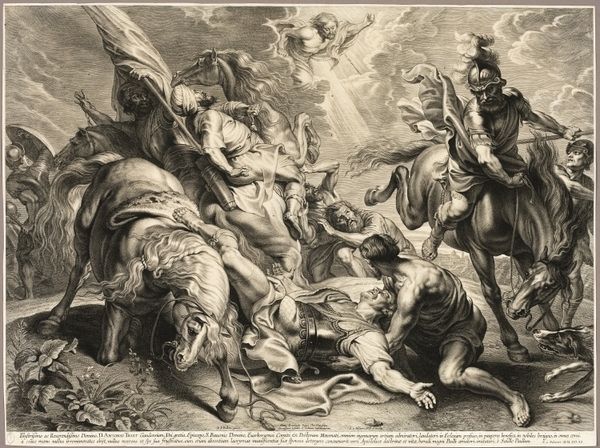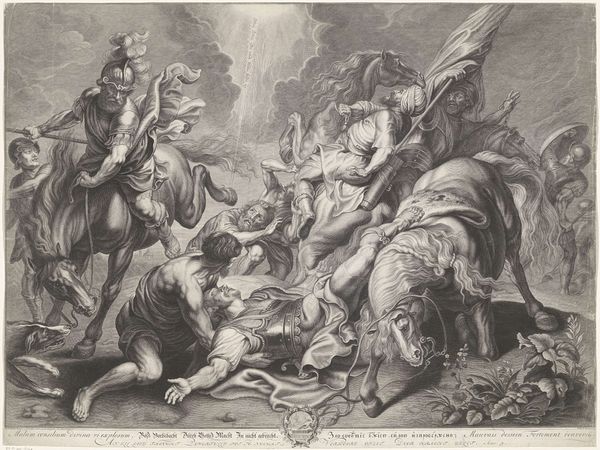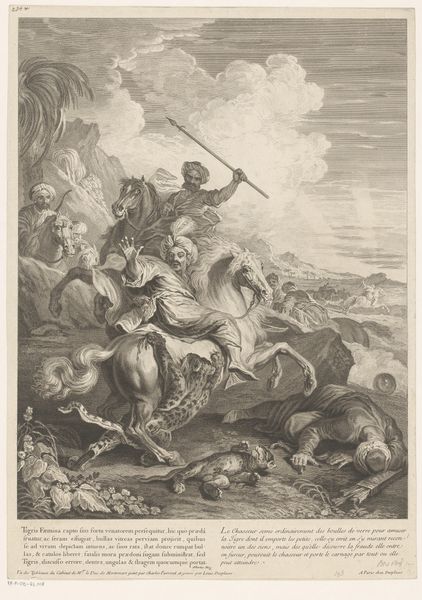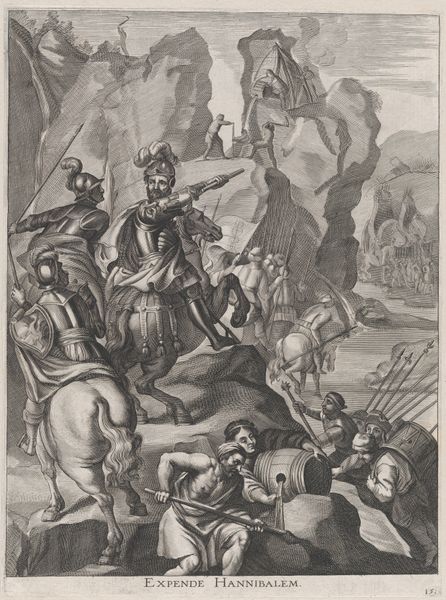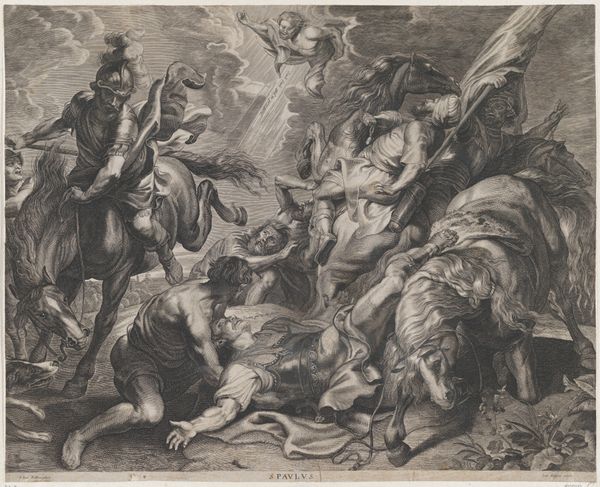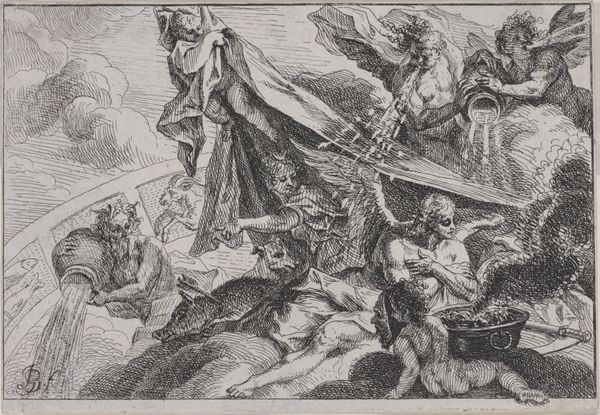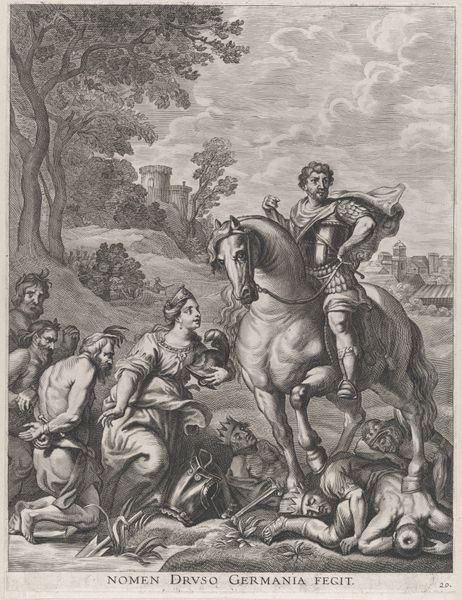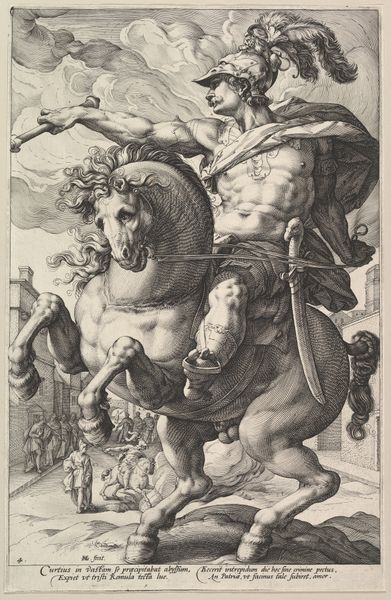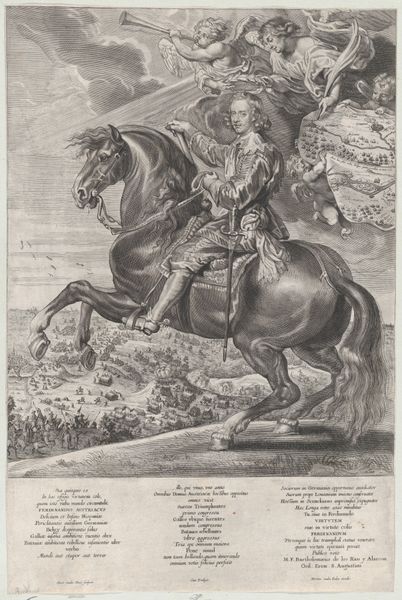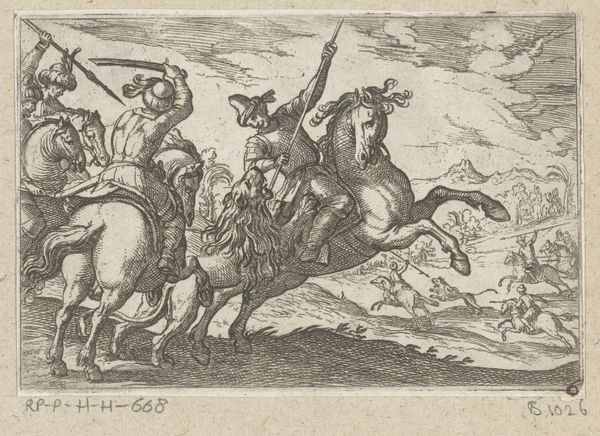
Plate 28: Mars on horseback at center, and Romulus and Remus with the wolf at lower left; from Guillielmus Becanus's 'Serenissimi Principis Ferdinandi, Hispaniarum Infantis...' 1636
0:00
0:00
drawing, print, engraving
#
drawing
#
baroque
# print
#
landscape
#
figuration
#
horse
#
men
#
portrait drawing
#
history-painting
#
engraving
Dimensions: Sheet (Trimmed): 11 3/4 × 15 1/16 in. (29.9 × 38.2 cm)
Copyright: Public Domain
Curator: Let's take a look at "Plate 28: Mars on horseback at center, and Romulus and Remus with the wolf at lower left," an engraving by Jacob Neeffs from 1636. You can find it here at the Metropolitan Museum. Editor: My first thought? Overwhelming! It's a lot to take in, all these figures jostling for space. But the etching work itself is really compelling. It has that old, fable-esque look to it, right? Curator: Absolutely. Neeffs created this print as part of a series celebrating Ferdinand, the Prince of Spain. These kinds of prints were vital for disseminating political imagery and projecting power back then. Think of them as early PR. Editor: Right. That explains the slightly self-serious vibe from Mars. He’s quite literally looming over Romulus and Remus—Rome's founding myth sort of squashed by imperial ambition. Does that read correctly to you? Curator: Indeed, connecting the Spanish prince to figures of Roman imperial power offered legitimacy and amplified the intended propaganda message. Mars represents military might, linking the Prince to a lineage of conquerors. Note his confident stature versus the pastoral elements. Editor: So, this piece is all about claiming cultural heritage, rewriting history on a copper plate. I wonder if the average person back then read it the same way the political elites did. Maybe they were just interested in the cute babies and the wolf? Curator: Good question! Consider, too, the context of the Thirty Years' War then raging across Europe, with complex religious and political tensions. These images served to solidify a narrative favorable to the Spanish crown. Its lasting effect? Well, that's debatable, isn’t it? Editor: Oh, totally. Art's always doing more than one thing at once. I do enjoy how the almost frantic details invite a slow unravelling of its meanings, despite being pretty straightforward about its central message. Curator: Indeed. Each viewing offers a deeper layer. The density mirrors the weight of the messages conveyed. It encapsulates a powerful era of manipulation. Editor: Yes. It certainly makes you appreciate art's double-sided nature and its impact in both its own era, and on us, even centuries later.
Comments
No comments
Be the first to comment and join the conversation on the ultimate creative platform.
